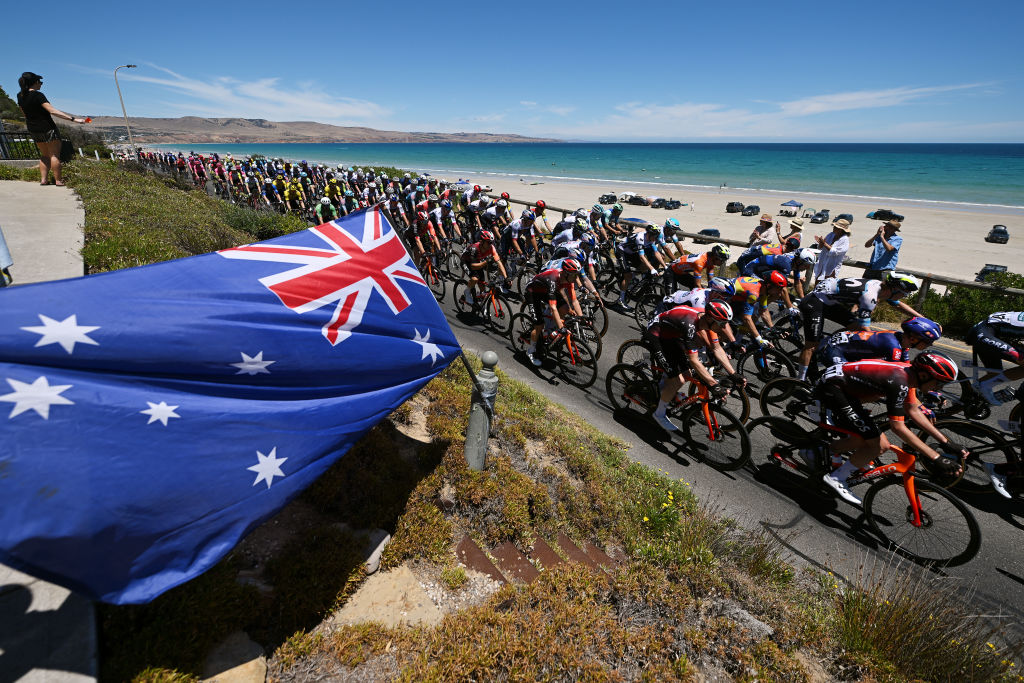Best cycling gloves: We test 12 of the best short and long fingered options
Whether half-finger or full, here are the best cycling gloves for protection, comfort, warmth, aerodynamics and more
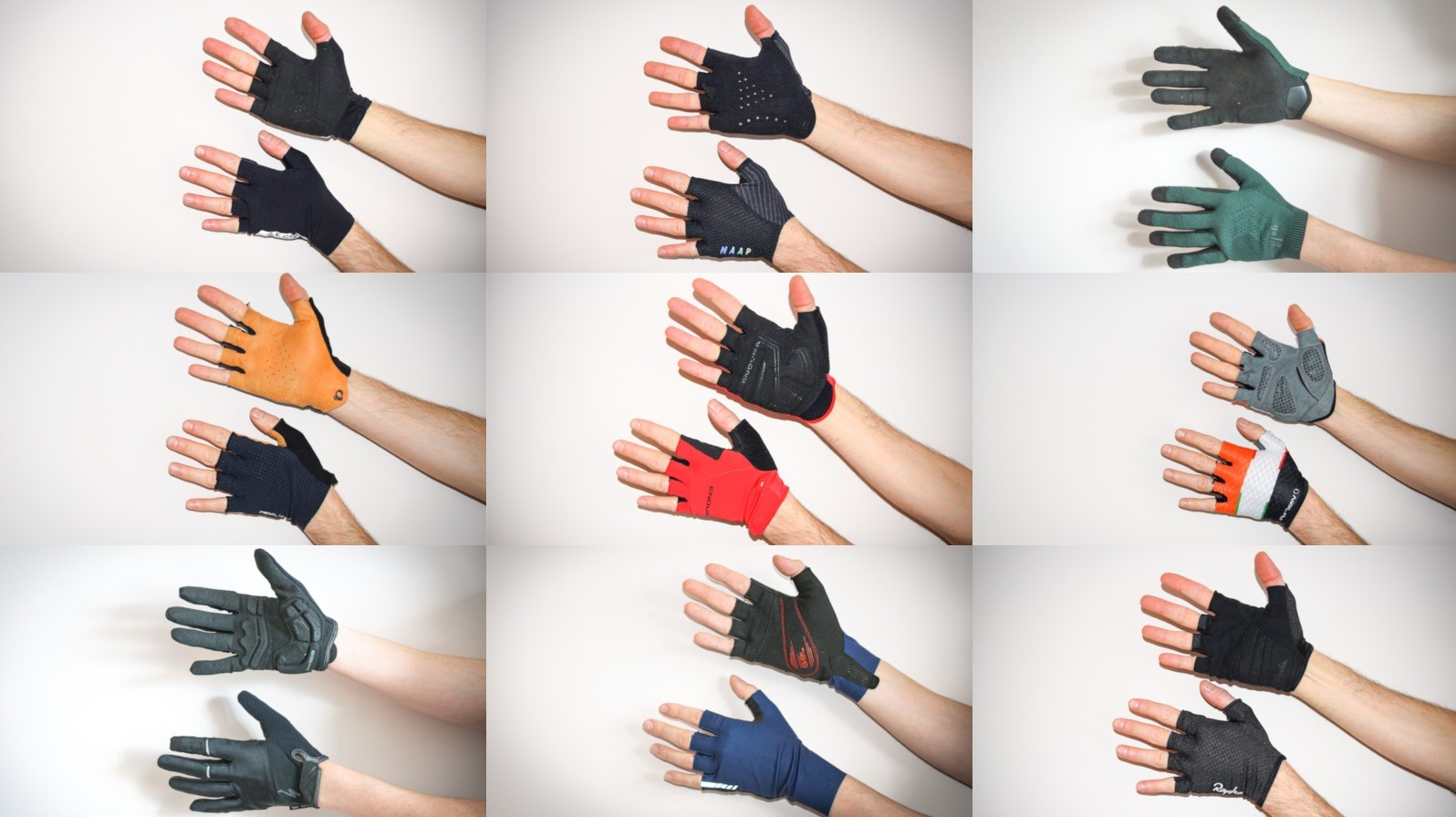
The best cycling gloves, or track mitts, as they are commonly known, have been worn by cyclists for decades to protect their hands and provide extra comfort on the bike. The humble track mitt or short-fingered glove is one of the few pieces of cycling equipment that has stayed the same over the years.
We use our hands constantly when cycling. When gripping the handlebar tape and gear and brake levers, wiping our faces, drinking, repairing mechanicals, and wrenching on the bars when sprinting or climbing a steep hill. Cycling gloves can also protect the skin on our hands, particularly in the event of a crash, and add grip and comfort. Winter cycling gloves do the job of keeping our hands warm in the cold, but when summer arrives, gloves are still very valuable.
If you're looking for warmer winter gloves, head to our dedicated guide to the best winter cycling gloves.
The best overall spot goes to the Rapha Core mitts. They edge it due to their simple, functional design and outright comfort. My small size pair fits perfectly and is fantastic to wear. If you're looking for a nice long-fingered option for warmer temperatures, the Galibier Zephyr gloves are my pick right now. There should be something for most riders in this guide, though, from super thin gloves to padded and long-fingered options for gravel and off-road riding.
If you're starting to ride in cycling gloves as the weather warms up, you might want to check out our best cycling gilets guide for spring as well.
There is some handy buying advice down at the bottom of the page to help inform your decision and improve your own knowledge if you want to learn more.
Best cycling gloves
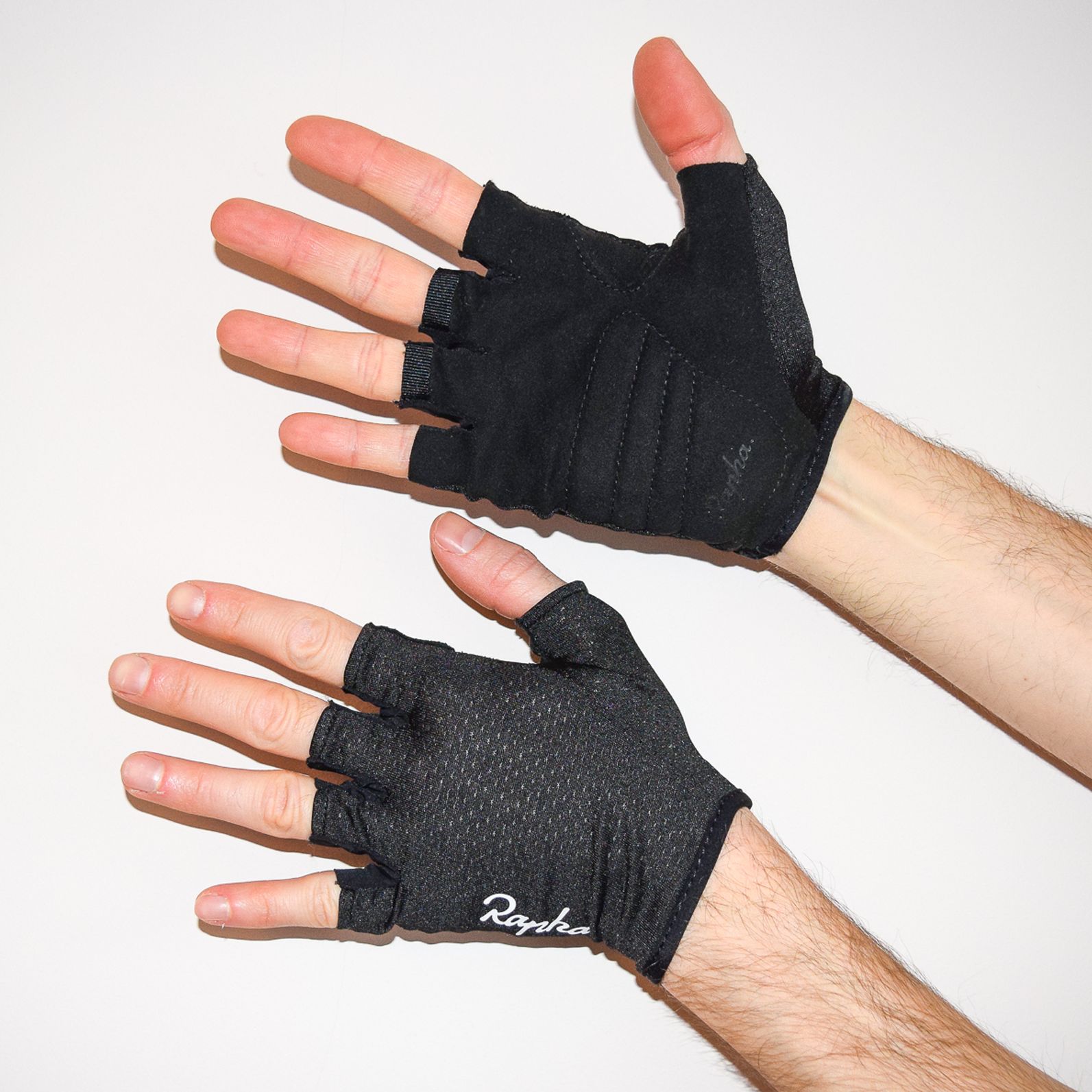
➕ Very comfortable design
➕ Simple, classic styling
➖ No dedicated thumb wipe panel
The Rapha Core Mitts are $50/£40, cheaper than the top-end Pro Tram mitts, but they pack a real punch. They are available in black and navy, in XS-XXL sizes, and each glove features a simple, classic white Rapha logo. The styling works for on or off-road riding.
A perforated mesh fabric on the back provides great comfort and cooling, whilst a synthetic, lightly padded suede palm provides solid levels of comfort and grip. The gloves are lightly compressive but remain really comfy everywhere, which isn't always the case.
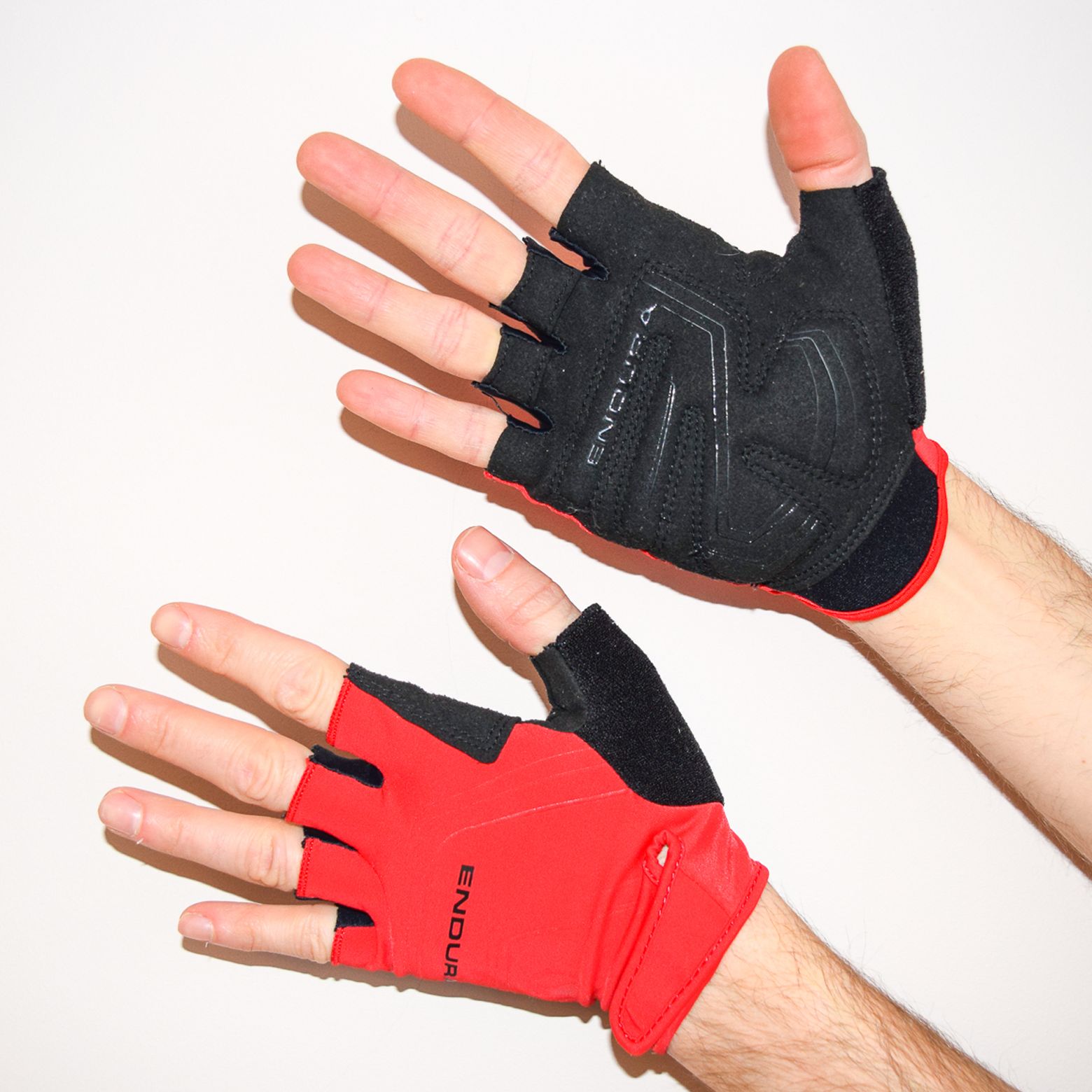
➕ Great value for the features included
➕ Nice Terry cloth thumb wipe panel
➕ Ample Gel palm padding
The Xtract mitts from the Scottish brand Endura are good quality mitts that have some design features I value.
The Xtract mitts come in four bright colours and are competitively priced. They are the only gloves in the test to feature a velcro wrist closure strap. Seemingly a rare design choice of late for brands, but one that makes getting the gloves on and off really easy.
There's a generous Terry nose wipe panel on the thumb, which really helps if you need to wipe your nose or face. There's also gel palm padding overlaid with a silicone grip. If you want a solid pair of gloves that won't break the bank, look no further.
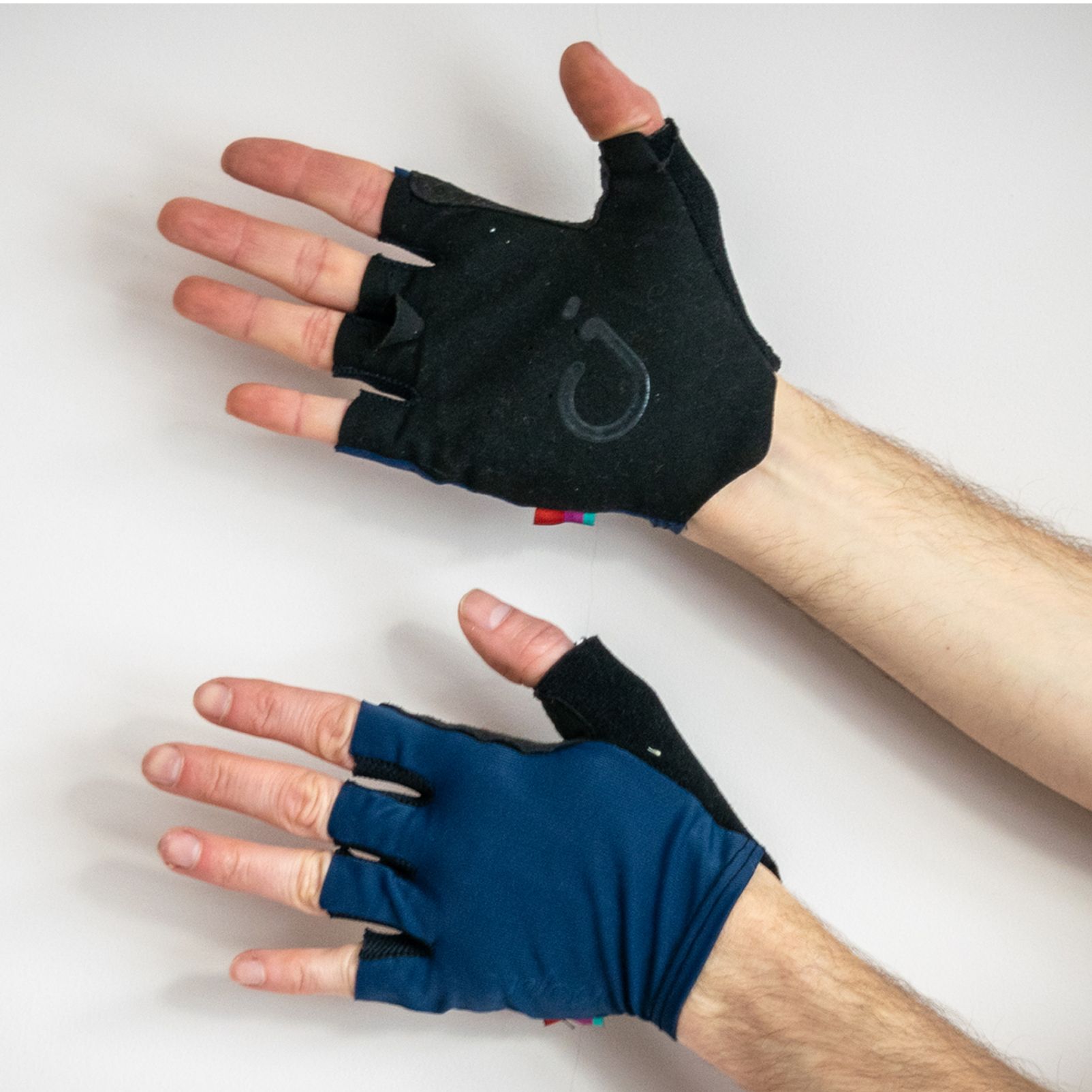
➕ Competitive price
➕ Thumb wipe panel
➕ UPF50 material
➖ Some riders may want more palm padding
The Velocio Signature gloves are simple, quality cycling gloves that can do everything well.
Available in black or navy, like the Rapha Core mitts, these gloves will be suited to a wide range of riding and will suit riders who like a thin, lightweight glove best, as there is minimal palm padding.
They also have a nice soft nose wipe panel on the thumb that I really like and a grippy silicone Velocio logo on each palm. The material on the back of each glove is UPF50-rated, guaranteeing sun protection.
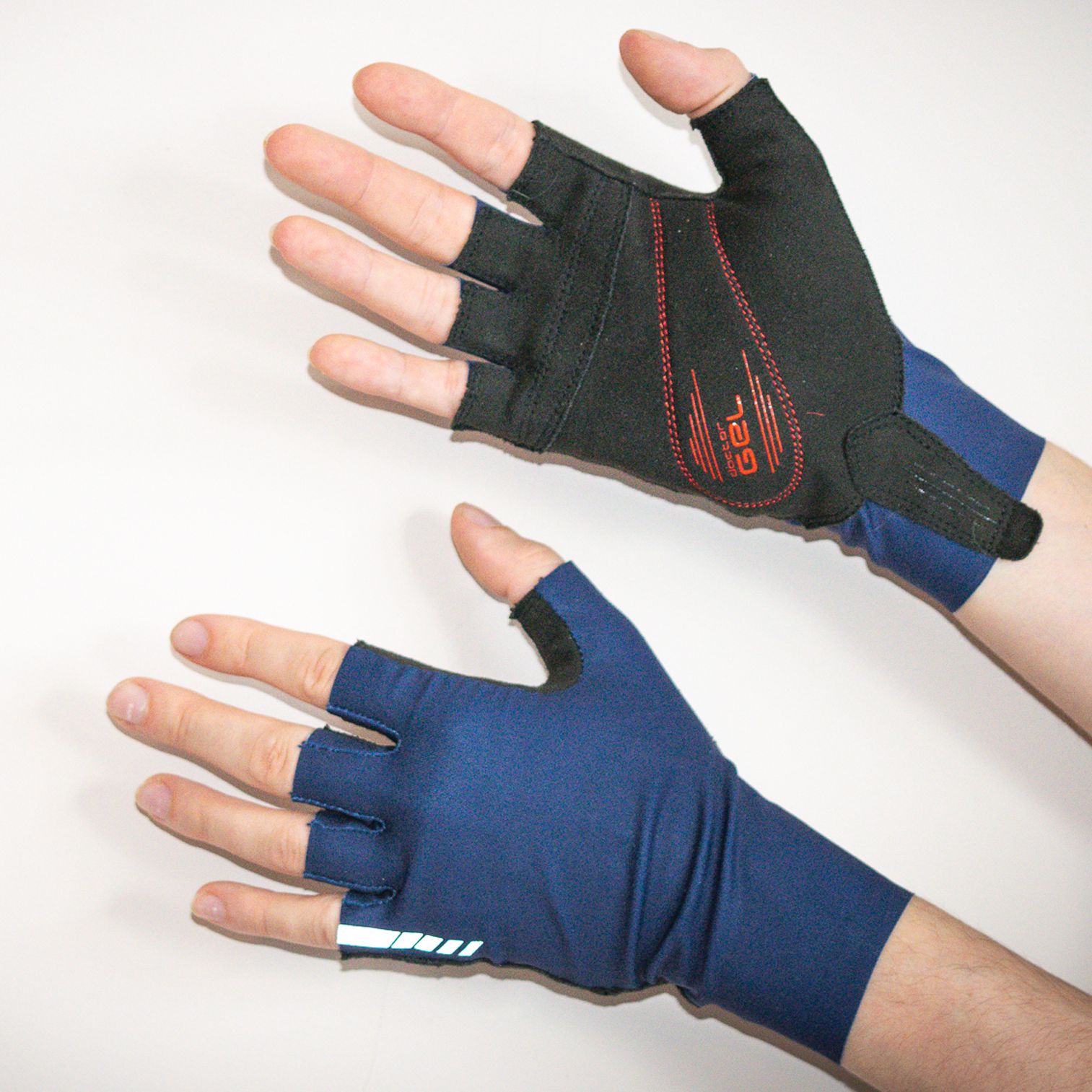
➕ Nicely padded palms
➕ Pull tab
➖ May not be faster for every rider
Riders will often go for an 'aero glove' for all manner of racing. Aero gloves tend to extend further up riders' wrists and are constructed to offer a tighter fit.
The TT Raceday glove from GripGrab does just this and uses a silicone gripper to keep its longer aero wrist cuff in place. The gloves are still comfy though and have a nice amount of palm padding and a handy pull tab.
I took these gloves to the wind tunnel recently to find out more. You can read more about this at the bottom of the page.
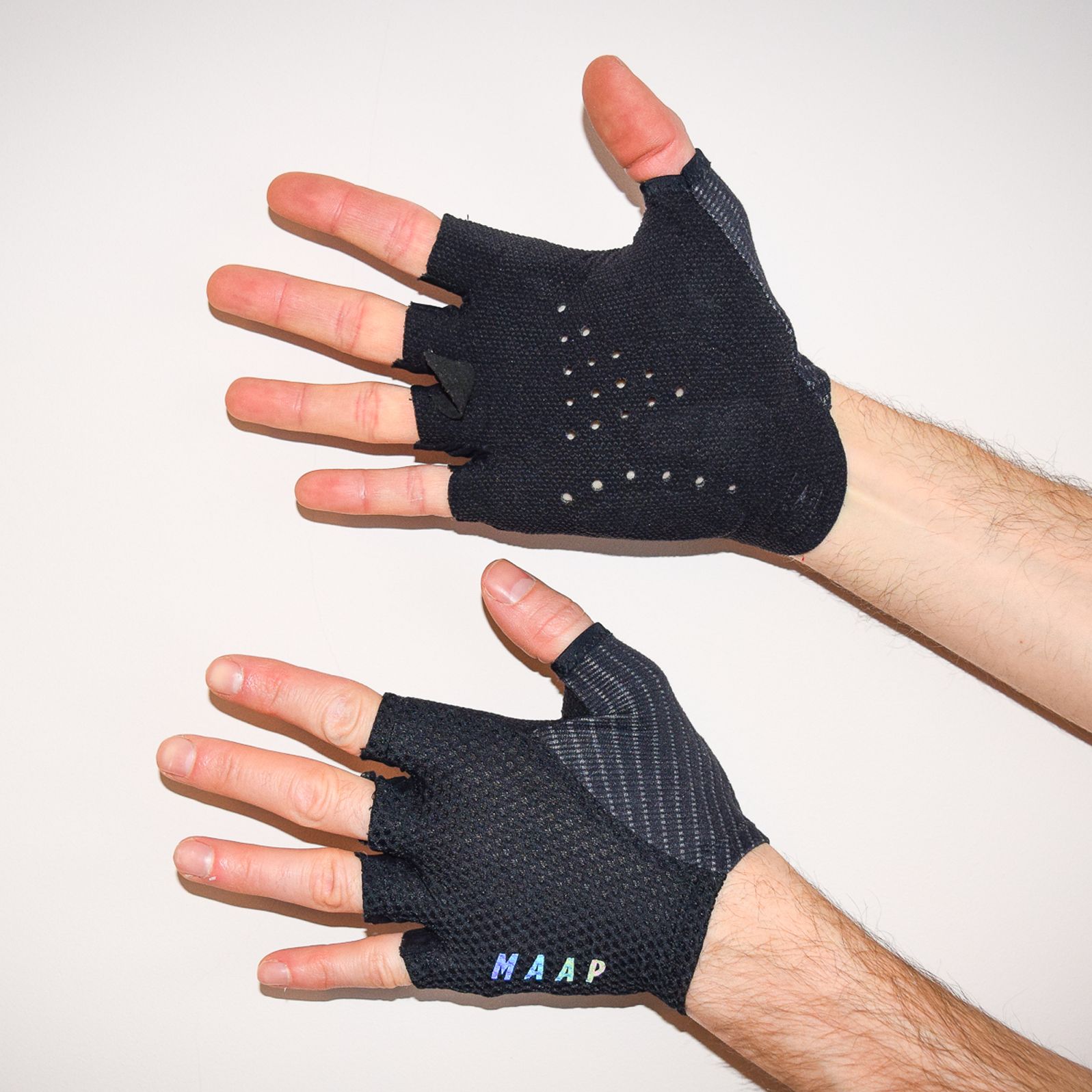
➕ Unique palm gripper
➕ Stylish design
➖ Higher retail price
The MAAP Pro Race Mitt is a seriously breathable, premium mitt from the Australian brand. Featuring a mesh backing and perforated palm, these gloves are perfect for hot days in the saddle when you are sweating. I've used them indoors on Zwift until they were sodden, and they dealt with the moisture well.
The gloves feature an elastic interface palm, which is a series of tiny velcro hooks. They are soft to the touch but add grip, and I haven't seen them on other gloves.
The gloves are available in eight different colours and are stylish to boot, if a little on the pricey side for track mitts.

➕ Superlight, minimalist design
➕ Rubber palm gripper is nice and tacky
➖ No pull tabs to help you take them off
The Velotoze Featherweight gloves are a new addition to the guide this year. If you want a super light, thin track mitt, then check this out
The Velotoze feature an incredibly lightweight design with a fine mesh palm topped with a silicone honeycomb pattern, which I have found to be surprisingly grippy. They feel light and unrestrictive and are a lot less compressive than something like the Endura XTRACT mitt.
If you favour a lighter glove to feel your bars or want something that won't feel too heavy in hot conditions or when indoor training, the Featherweights are going to be a strong contender.

➕ Low-key classic styling
➕ Reflective strip on hand
➖ No thumb wipe panel
The simply named 'cycling mitts' from Le Col are the brand's padded all-rounder. Made in Italy, they come in three colours and feature lightweight and perforated palm padding and a reflective stripe. The cuff is a little longer than the Rapha gloves, for example, useful if you don't like a gap between long sleeves and your mitts.
There are tabs on the fingers to help you pull them off and the lycra backing is stretchy and lightweight. They are slightly snug around the fingers, so size up if you think you may have larger fingers or are at the upper end of a size.
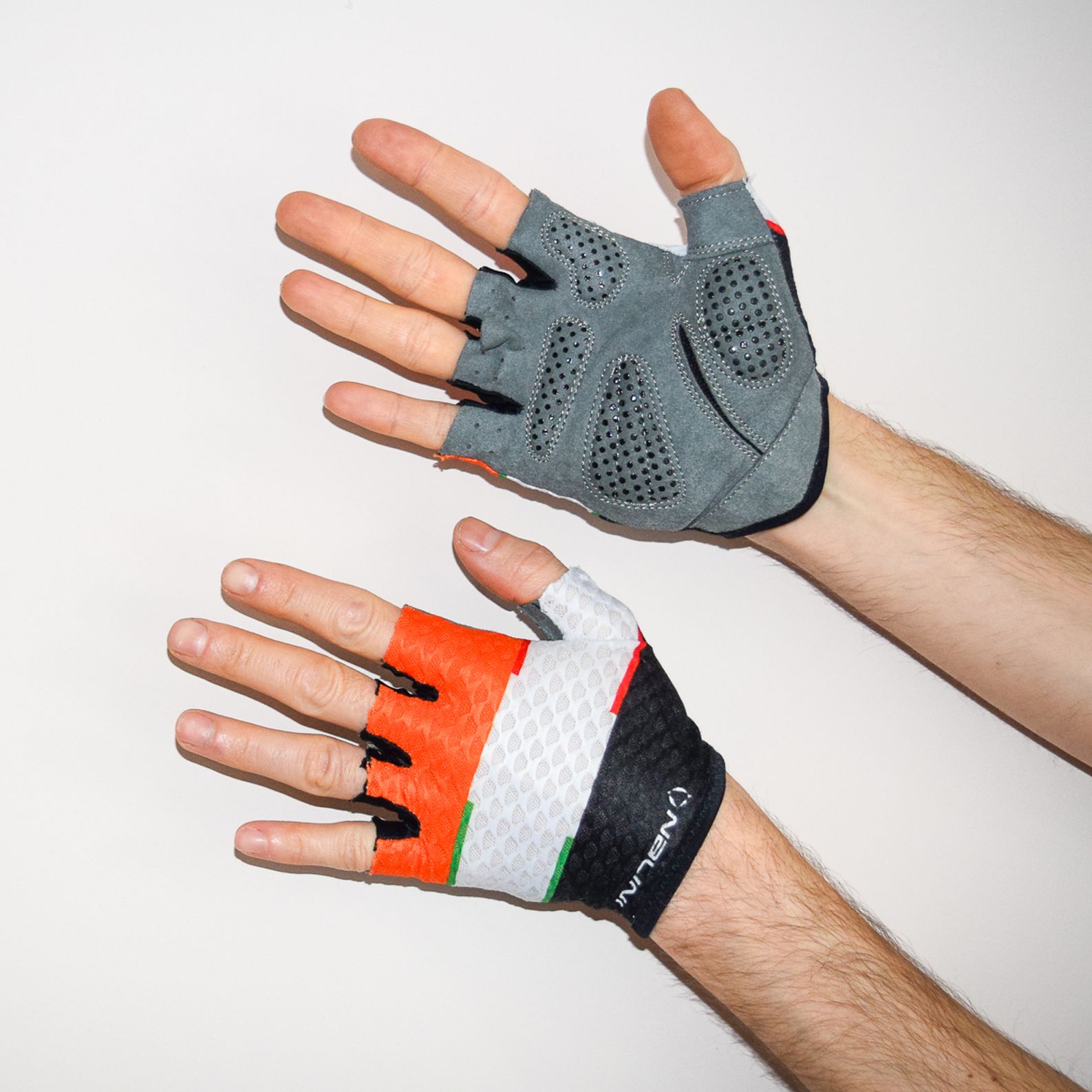
➕ Soft, well-fitted mesh top section
➕ Well-padded palm
➖No thumb wipe panel
Nalini has been making cycling kits for a long time for other brands and pro teams.
Made in Italy, the summer gloves are lightweight and mix an ultralight, comfortable mesh back with a durable, padded palm. There are perforations on the undersides of the fingers to aid cooling and four strategically placed palm pads with silicone gripper dots to help you grip.
Their fun, bright design helps them stand out from a lot of dark cycling mitts and brightens things up.
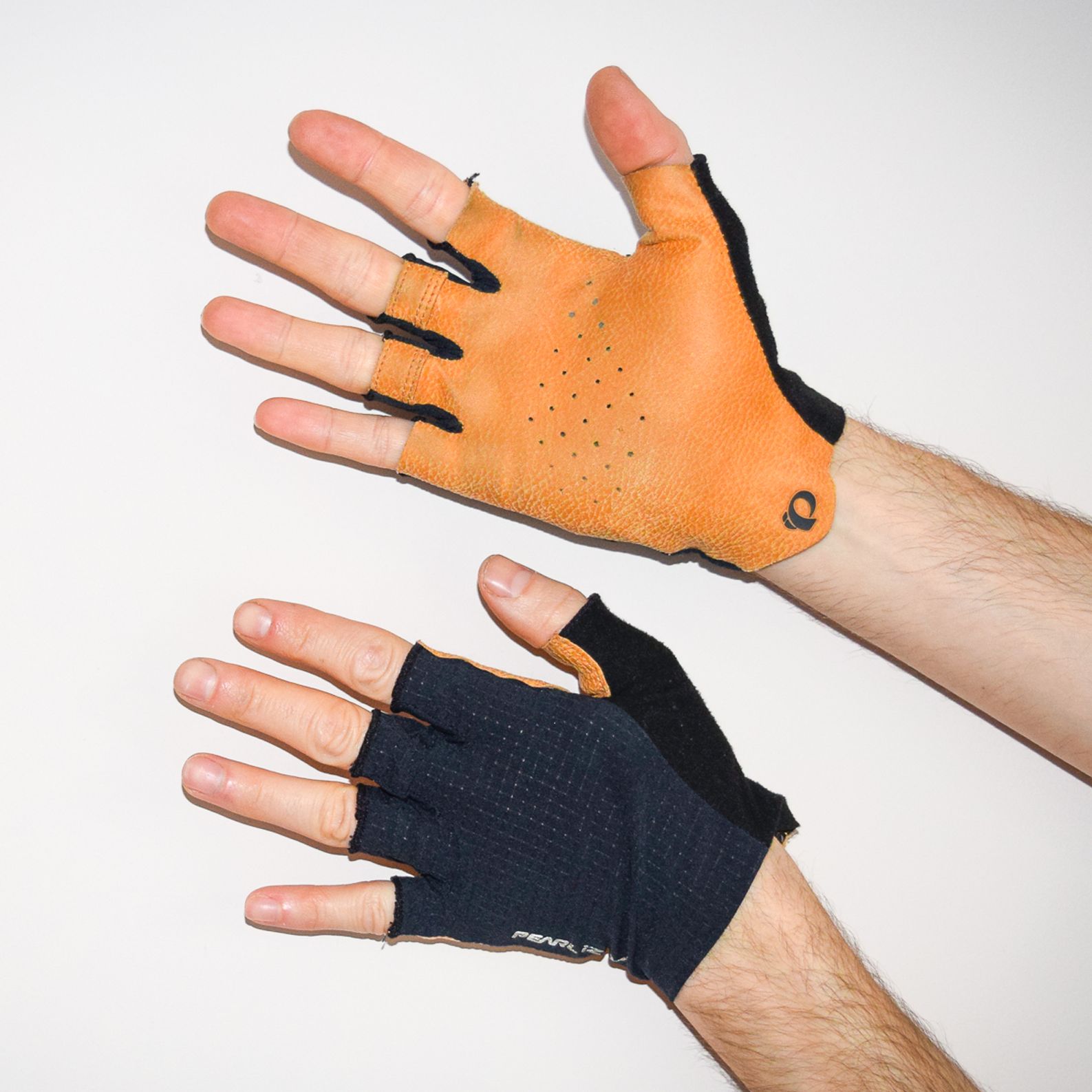
➕ Thin palm offers really nice grip
➕ Soft thumb wipe panel
➖ The wrist area sits slightly loose in places
The Pearl Izumi Pro Air gloves have a really interesting design. They use a thin synthetic leather palm with perforations and no added padding. It's really comfortable and lets you really grip and feel the handlebars.
The outer section of the gloves is fast-drying thin mesh and there's a really soft thumb wipe panel. There is a nice contrast between the retro-influenced synthetic leather palm and the mesh outer that looks really smart.
These gloves sit between the barely there Velotoze mitts and more regular padded gloves, ideal if you want a thin palm to feel your bars a bit more.

➕ Touchscreen compatible
➕ Lots of palm padding
➕ Large nose wipe panel
These Specialized BG dual gel gloves are a really good buy for the money for me. They are well-suited to gravel and MTB riding but would also suit warmer road rides. They are also cheaper than some of the mitts in this guide.
They have a velcro closure and a large nose wipe panel, touchscreen compatibility and lots of palm padding that seems like it may be too much at first but in use, it doesn't get in the way. A solid buy!
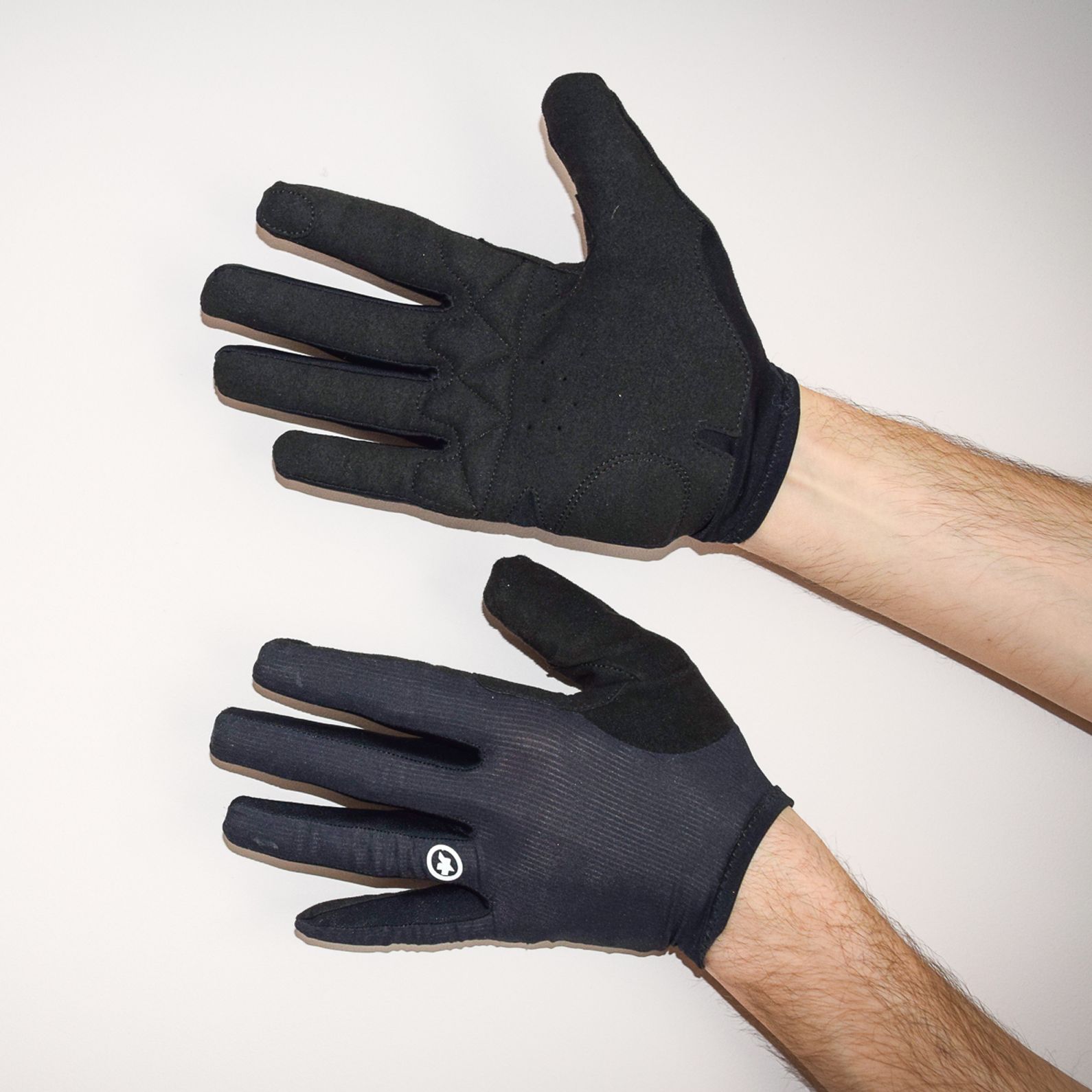
➕ Thin backing to prevent overheating
➕ Touchsreen finger compatability
➕ Nose wipe panel on thumb
➖ No pull tabs to get them off
The Assos RS LF Targa gloves are a thin, long-fingered option that is perfect for cooler temperatures or riders who want a long-fingered option.
The mesh back is thin to allow plenty of ventilation so you won't overheat and the wrist isn't too long, which also helps you keep cool and aids movement. There's a nose wipe panel and a touchscreen finger tab so you can use your phone with them on. These gloves are great for autumn, spring or summer, the occasional off-road ride, and even running.
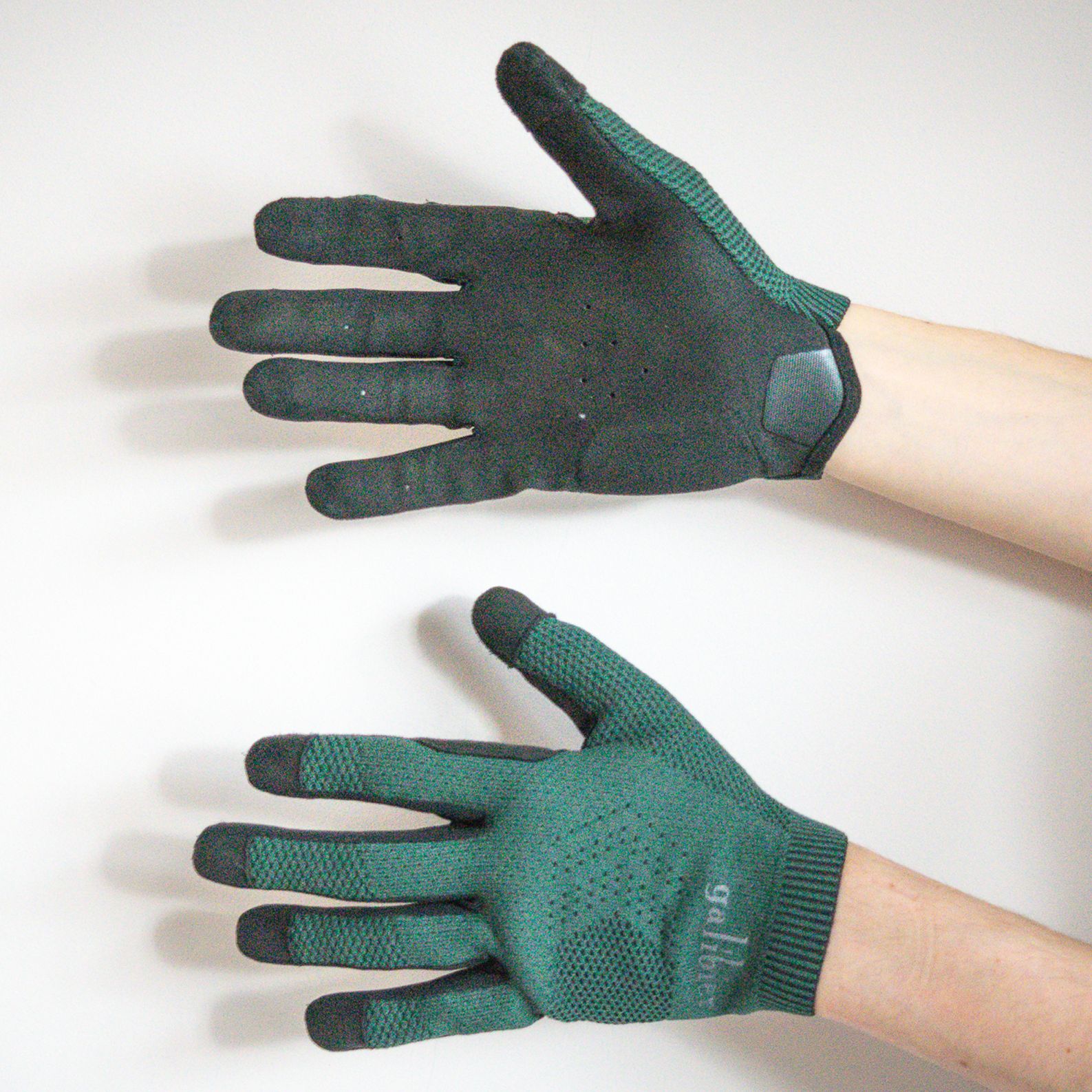
➕ Touchscreen compatible
➕ Very easy to take on and off
➖ No nose wipe panel
The Zephyr 'All surface' gloves from Galibier will indeed work across all surfaces or riding disciplines but for me, suit gravel riding the best. They would also be solid for MTB riding.
I've worn them a lot lately for gravel rides and really like them. The woven material is soft and comfortable and the gloves are really easy to pull off and back on again if the temperature is changing or your using your phone.
The styling and bottle green colour also suit a more alternative, gravelly aesthetic and the gloves have garnered a few positive comments from riding mates. They are also great value at under $45.
Last updated on 3rd October 2025
We updated all the product images in the guide and added an in-depth review for the best overall Rapha Core mitts gloves. We also added direct links to manufacturers product pages.
How to choose the best cycling gloves for you
- Do you need more comfort? If you're looking to reduce vibrations on long or rough rides, choose a pair of gloves with thicker padding on the palm.
- Do you want to enhance control? Look for a glove that enhances grip and has a thinner palm for improved bar feel.
- Do you ride in hot weather? You will want to go for a thinner glove with a fingerless design.
- Do you ride in cold weather? Go for a full-length finger. If you ride in the wind, rain and/or cold, consider a glove with windproof panels, waterproofing, a thicker cuff or extra insulation.
- Do you need any other features? Towelling to wipe a snotty nose, reflective details for commuting in the dark or touch screen compatibility are all worth considering.
Everything you need to know about the best cycling gloves
Gloves aren't the most critical piece of cycling kit and finding some you like should be pretty easy. Comfort and fit are important and poorly fitting gloves may hinder your control of the bike so measure up or try them on or try before you buy. Aside from that if you are new to cycling gloves find some within your budget in a style or colour you like and give them a go.
Do I need gloves for road cycling?
You certainly don't need gloves for road cycling but plenty of riders choose to use them to protect their hands and if you are relatively new to cycling you may too.
You will see the majority of pro riders in gloves because they spend hours every day riding a bike which will take its toll on the hands over time. Gloves also protect the palms of your hands in the event of a crash.
For amateur cyclists who don't spend nearly as much time on the bike the need for mitts is a little less pressing but for long days in the saddle or summer rides when your hands might be sweatier they can really help improve comfort, try them and see what works for you. Some riders choose to wear no gloves a lot of the time because they prefer it, this is fine too.
In some cases, if riders are racing on the track in particular or in some road or circuit races, particularly for young riders the race commissaries or officials will stipulate gloves need to be worn to compete in the name of rider safety, so it's often worth keeping a pair of gloves in your kit bag just in case.
Are aero gloves faster?
All kinds of different aero gloves have been on the market for a long time now. As part of a recent trip to a wind tunnel, we tested the GripGrab TT aero gloves to see how they fared and to inform our own testing and strengthen this guide.
In our wind tunnel run, when riding in a standard upright position and holding the gear shifters, the aero gloves tested marginally slower for me when riding in that particular position. Whether aero gloves actually make you faster is going to come down to your own position on the bike as well as the actual fit of the gloves and how they sit on your wrists.
We understand some riders' skin is actually really fast. Remco Evenepoel's bare arms are said to be faster than a long-sleeved skin suit, this is just an example of how much things are going to vary from rider to rider.
Either way, wearing some gloves is also going to offer some valuable hand protection and may be worth thinking about for extra grip and security on time trial handlebars.
Do gloves need a nose wipe panel?
A nose wipe panel can be really useful if you find yourself clearing your nose or being a bit snottier on the bike. It's very convenient and keeps things a little more civilised. Lots of brands seem to be making lightweight gloves without a nose wipe currently but it's still a really useful feature to look for in your gloves.
Why fingerless gloves?
In the summer on a road bike, full-length gloves are slightly overkill most of the time, although there are some excellent lighter-weight options available. Short-fingered gloves or mitts provide the right amount of protection whilst helping hands stay cool and providing good dexterity.
Indoor training can often get a bit hot and sweaty, and using the best smart trainers can be hot work. A light pair of cycling gloves can also be valuable when riding and training indoors.
Will cycling gloves make a difference?
In many cases yes they will. Particularly if you are prone to getting sore or chafed hands after several hours on the bike, some cyclists have also experienced nerve issues in their hands from repetitive use and gloves can help minimise any potential repetitive strain-related injuries.
They will also come into their own if you ride over rough ground or poor surfaces which transmit a lot of extra vibrations through the handlebars.
If you have ever crashed your bike and had to deal with gravel rash on the palms of your hands, you will definitely understand and appreciate the benefit of wearing gloves.
How we test cycling gloves
I have been riding and racing in cycling mitts for over fifteen years and have learnt a lot about what works and what I like and don't like in that time. I have tested all of the gloves in this guide myself, riding indoors and outdoors for long periods on road and gravel bikes, as well as regular washing to put the gloves through their paces.
I have tested each pair of gloves in this guide for hours on the bike. I've ridden indoors on my smart trainer to see how they perform when soaked in sweat in the middle of a workout. I've also worn them on slightly chilly spring mornings as the day began to warm up and on warmer days outdoors on short and long rides, even for a road race. I've used them all in anger, riding hard in and out of the saddle, as well as for more relaxed rides to put them through their paces and find out how they perform.
Testing is the backbone of the tech department at Cyclingnews, and how we test is taken seriously, so read on to find out more.
The latest race content, interviews, features, reviews and expert buying guides, direct to your inbox!

Tom joined the Cyclingnews team in late 2022 as a tech writer. Despite having a degree in English Literature he has spent his entire working life in the cycling industry in one form or another. He has over 10 years of experience as a qualified mechanic, with the last five years before joining Cyclingnews being spent running an independent workshop. This means he is just as happy tinkering away in the garage as he is out on the road bike, and he isn’t afraid to pull a bike apart or get hands-on with it when testing to really see what it’s made of.
He has ridden and raced bikes from an early age up to a national level on the road and track, and has ridden and competed in most disciplines. He has a keen eye for pro-team tech and enjoys spotting new or interesting components in the wild. During his time at Cyclingnews, Tom has already interviewed some of the sport's biggest names including Mathieu van der Poel, Tadej Pogačar and Alberto Contador. He's also covered various launches from brands such as Pinarello, Ridley, Specialized and more, tackled the Roubaix Challenge sportive aboard his own rim-brake Cannondale SuperSix Evo, tested over 20 aero helmets in the wind tunnel, and has created helpful in-depth buying advice relating to countless categories from torque wrenches to winter clothing.
